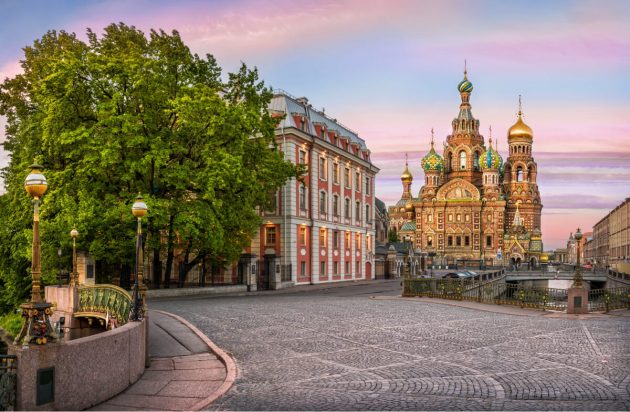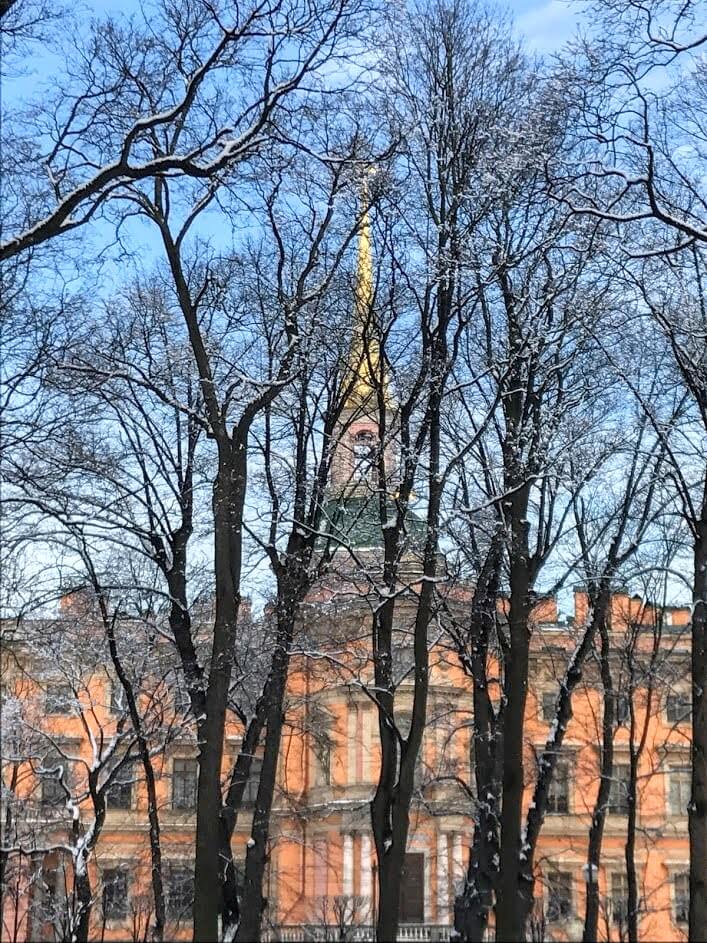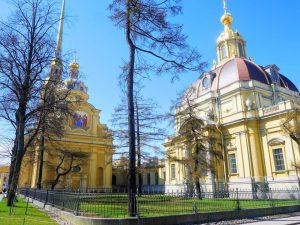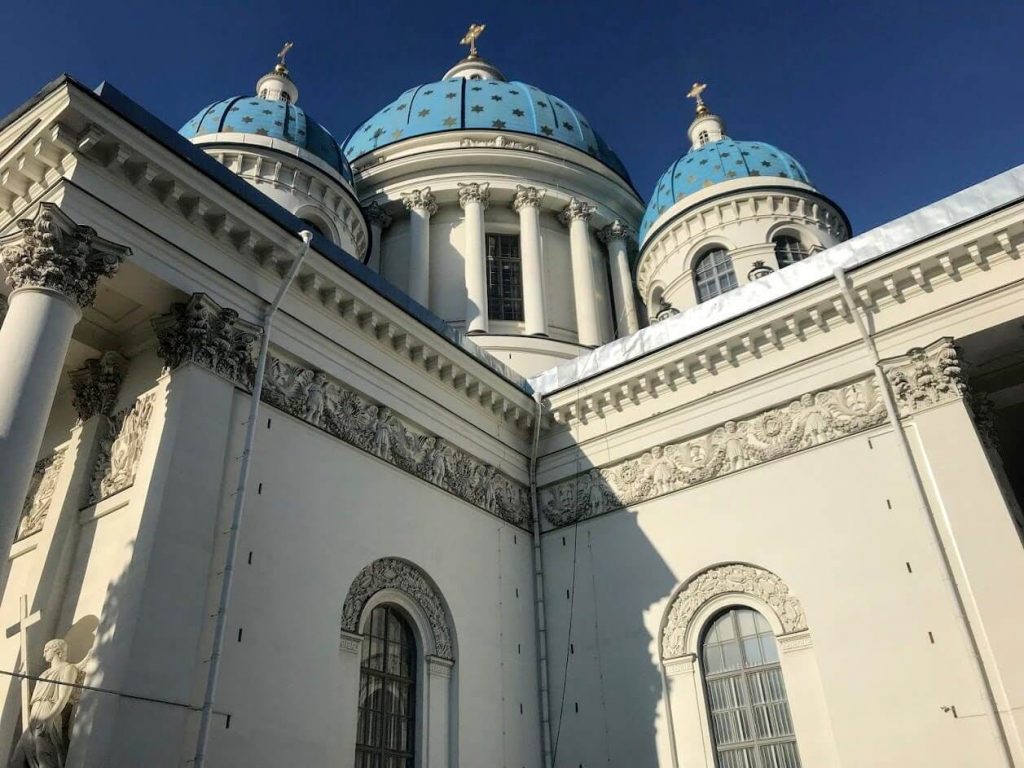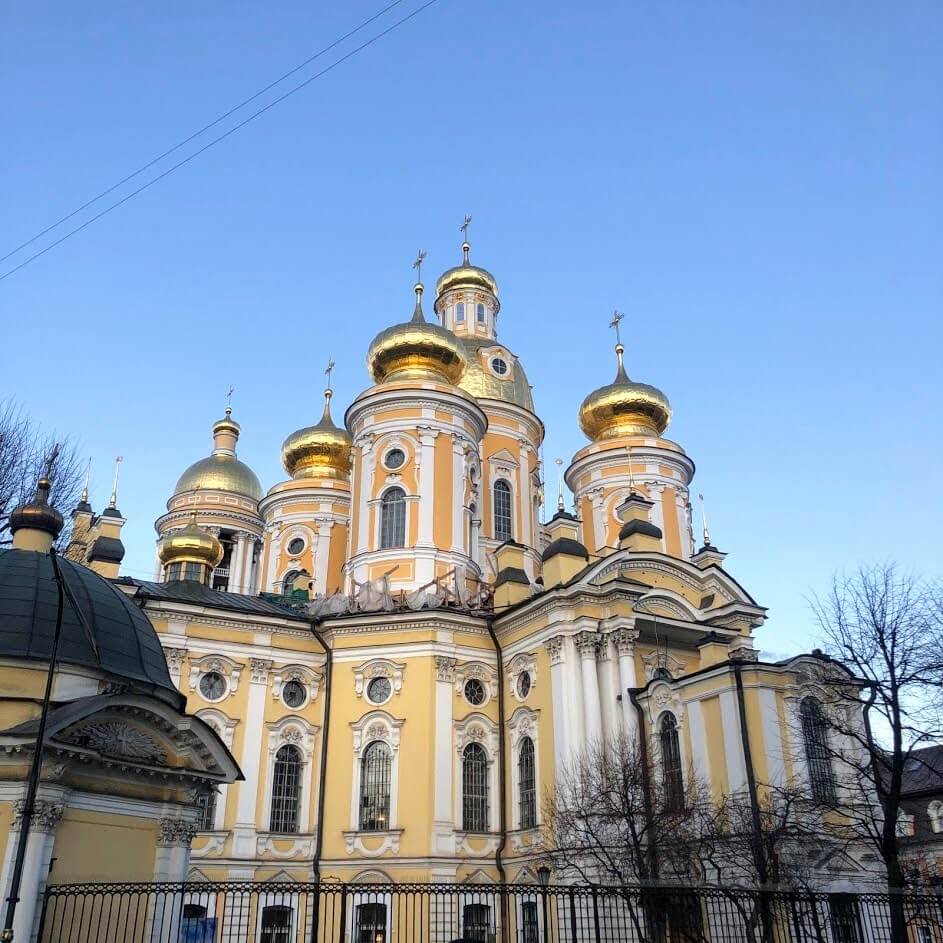There is a saying in Russian which claims how there are three types of people – admirers of Tolstoy’s work, admirers of Dostoevsky’s work, and admirers of them both. In this article, we will continue exploring places related to some of those famous Russian writers. Now is the turn to explore Saint Petersburg in the footsteps of Fyodor Dostoevsky.
Saint Petersburg in the footsteps of Fyodor Dostoevsky
Back by the popular demand, lovely Alexandra and Karina from Carusel Tours wrote another article for the Culture Tourist. After the history of Fabergé Eggs and places linked to Leo Tolstoy in Moscow, they prepared an interesting post that will help you explore Saint Petersburg in the footsteps of Fyodor Dostoevsky.
We will leave old and charming Moscow of Tolstoy behind and stroll through the poor districts and tiny dark lanes of Saint Petersburg of Dostoevsky.
Fyodor Dostoevsky in Saint Petersburg
Fyodor Dostoevsky was born and bred in Moscow, but he spent most of his productive life in Saint Petersburg. Dostoevsky was never fond of it. But, the city became an inexhaustible source of stories and characters for his works.
If you read some of Dostoevsky’s novels, you already have the portrait of the city drawn by him in your imagination.
An incredible number of houses and squares in Saint Petersburg are linked to Dostoevsky. He moved from one shabby apartment to another almost thirty times during his life there. This is not to mention other important locations that could help you to explore Saint Petersburg in the footsteps of Fyodor Dostoevsky.
Most of them are corner apartments in ordinary residential houses of the city. Saint Petersburg of that time was very different from Moscow, where many people still lived in one or two–story mansions, and they could afford to rent out small buildings, as Leo Tolstoy did. In Saint Petersburg, only wealthy and noble families could live in a separate building.
⤷ Read more: Saint Petersburg Travel Guide
Places linked to Dostoevsky in Saint Petersburg
In this post, we will not be listing all the houses where Dostoevsky lived in Saint Petersburg. We will focus on the most important locations linked to Dostoevsky in Saint Petersburg instead. And give you some advice on how to explore Saint Petersburg in the footsteps of Fyodor Dostoevsky.
⤷ Click here to see the map with Dostoevsky locations in Saint Petersburg
Stop 1 – St. Michael’s Castle
*Address: 2 Sadovaya Street
Fyodor Dostoevsky moved to Saint Petersburg from Moscow when he was sixteen. He came to study in the Engineering School that at that time was located in the beautiful St. Michael’s Castle. Therefore, the other name of this castle that you may often hear among locals is Engineering Castle.
Dostoevsky came together with his beloved brother Michael, who also studied in the Engineering School. Michael, just like Fyodor, devoted his life to literature and lived in Saint Petersburg the rest of his life.
Dostoevsky’s favourite place in the castle was the corner room by the window overlooking the Panteleimon Bridge. From that moment and until the end of his life, he preferred corner apartments.
Some people believe that Dostoevsky rented almost exclusively corner apartments because they were less expensive as they required more firewood to keep them warm in the cold season.
However, we disagree with that! We are sure that this was not the main reason.
From a window of a corner apartment, one has a wonderful view of what is happening on the nearby streets, and that is what, in our opinion, attracted Dostoevsky. He must have overseen many prototypes of his future characters through these windows.
After Dostoevsky graduated from St. Michael’s Castle, and before his exile to Siberia for political views, he changed several rooms and apartments in various parts of the city. The Haymarket area turned out to be the most inspiring for him – there he wrote White Nights, Netochka Nezvanova and A Christmas Tree and a Wedding.
And he became a well-known writer.
Stop 2 – Wolf & Beranget Patisserie
*Address: 18 Nevsky Avenue, on the corner with Moika River
This was the best patisserie in the city at the time of Pushkin and Dostoevsky, frequented by many writers.
Here Fyodor Dostoevsky met Mikhail Petrashevsky, who was pioneering the ideas of utopian socialism. It was this acquaintance that nearly cost Dostoevsky his life.
Dostoevsky got carried away by the ideas promoted by Petrashevsky and his secret circle. When the emperor found out about this revolutionary movement, he ordered to imprison all the participants of the circle, and subsequently to execute their leaders.
This café still exists today. It is now known as the Literary Café, but it may as well be called the Evil Café.
It was the last place that Alexander Pushkin, the everything of Russian literature, visited on the morning before his fatal duel.
Nine years later, Fyodor Dostoevsky met here Petrashevsky. And in 1893, Pyotr Tchaikovsky got infected with cholera after he drank unboiled water at a dinner in this restaurant. He died of cholera a few days later. Do you still want to visit it?
Stop 3 – Peter and Paul Fortress
*Address: Peter and Paul Fortress
Dostoevsky and other members of Petrashevsky Circle were imprisoned into single cells of the prison at Peter and Paul Fortress. There he spent half a year and wrote the short story, Small Hero. By that time, he got deeply disappointed by his previous political views. Just before the Christmas of 1849, Dostoevsky and five other members of Petrashevsky Circle, including Petrashevsky himself, were sentenced to death by firing squad.
⤷ Read my guide about visiting Hermitage Museum at Saint Petersburg here
Stop 4 – Mock Execution at Semyonov Place
*Address: Nowadays Pionerskaya Square, at the intersection of Gorokhovaya Street and Zagorodny Avenue
Semyonov Place was a square for public executions at the imperial time. It was renamed into Pioneer Square by the Bolsheviks because, at the far end of it, the Theatre for Young Audience was inaugurated. And it’s still functioning today.
You will see a monument to A. Griboedov, another Russian writer, at the square. He was not sentenced to death by the Russian Imperial government. However, his fate is no less tragic than that of Dostoevsky. His monument was created in the Soviet time and put there just to fill in the space at the square.
Just a minute before the execution was about to happen, an urgent message from the emperor arrived. In it, Nicholas I granted mercy to all convicted and ordered to change the execution on katorga works in Siberia.
This pardon was actually agreed upon the day before, but on a condition that it should be announced in the last minute only.
During the Mock Execution, one of the convicted had lost his mind. And, of course, it left a huge impact on Dostoevsky. He later described the terrifying experience of expecting the execution in his famous novel Idiot.
Return from Siberia
In 1859, during the reign of liberal emperor Alexander II, Dostoevsky was permitted to return to Saint Petersburg. With the help of his brother Michael, who was a literary journal editor, some of Dostoevsky’s works were published. It included Memoirs from the House of the Dead, and he again became a famous writer.
At that time, Dostoevsky rented numerous inexpensive accommodation mostly in the Haymarket Area near Griboedov Canal, where he later placed all the characters of his Crime and Punishment.
TIP: If you’d like to see some of those places, take a look at a Dostoevsky in Saint Petersburg Tour that Alexandra and Karina are organizing.
Stop 5 – Dostoevsky locations in Saint Petersburg from the Crime and Punishment
*Address: 1,7,9 Kaznacheyskaya Street
Kaznacheyskaya Street, where most of the plot from the Crime and Punishment is happening, is where Dostoevsky lived himself. He lived in houses on numbers 1, 7 and 9, always in corner apartments overlooking the crossroads of Kaznacheyskaya and other streets.
There is a memorial plaque on the house on no. 7, where he completed Crime and Punishment. It’s also where he met his second wife, Anna Grigorievna. She was a stenographer, who helped him finish Gambler in one month, and thus saved him from the debt prison.
⤷ Read more about visiting Peterhof Palace from Saint Petersburg here
Stop 6 – Dostoevsky statue & Raskolnikov House
*Address: 19 Grazhdanskaya Street
A one minute stroll away is the corner of Grazhdanskaya Street and Stolyarny Lane, where you can see the monument to Dostoevsky. It’s also where a plaque is located, saying that this is the House of Raskolnikov, the main character of Crime and Punishment.
Some avid fans of Dostoevsky write their messages to the writer and Raskolnikov on the inner walls of the house which drives the local residents mad.
One British admirer of Dostoevsky managed to occupy the garret under the roof of the Raskolnikov House, and he lived there during the summer, trying to get closer to the understanding of Raskolnikov’s soul.
Stop 7 – Guardhouse at Haymarket Square
*Address: 3 Sadovaya Street
At a time of Dostoevsky, Haymarket Square (or Sennaya Square) was the centre of the busiest neighbourhood and the main trade square of the city.
A lot of newcomers to the town rented apartments and rooms in this area. Many women were forced to serve in the nearby brothels as they could not find other ways to earn money.
Dostoevsky often visited the market and the church on the square, just like Raskolnikov from Crime and Punishment did. Only a few buildings on a square survived from the time of Dostoevsky. But it continued to serve as the market square up until the 2000s, and you can still feel its spirit today.
You can tell straight away that this is not the most accommodating part of the city, and it was much less attractive at the time of Dostoevsky.
The yellow guardhouse with columns is one of the rare buildings preserved from the time of Dostoevsky. A small prison was located there. Dostoevsky was imprisoned in it a couple of times, for his inaccurate statements about the royal family and because of his debts.
Dostoevsky spent those days re-reading his favourite Les Miserables by Victor Hugo and eating food cooked by his second wife. So, he quite enjoyed that time.
The second survivor from the time of Dostoevsky is the old water fountain, where cabmen could buy water for their horses.
Stop 8 – Trinity Cathedral
*Address: 7A Izmailovsky Avenue
In our humble opinion, this is one of the most beautiful cathedrals in the city. Its large cupolas painted as the blue sky with golden stars are seen from many parts of the city.
On 15 February 1867, Fyodor Dostoevsky got married to his second wife Anna there.
Cathedral was devoted to the Izmailovsky Regiment. They wore a blue uniform, therefore the primary colour of its cupolas is blue.
The central dome of the cathedral burnt down during the restoration works of 2006. It was tough to stop the fire, as it turned out that the dome was made of wood. Three smaller cupolas survived the fire, but the main one and the fourth small cupola were built new.
TIP: Trinity Cathedral, as all the functioning churches of the city, is free to enter. Women should cover their heads before getting in.
Stop 9 – Dostoevsky Museum
*Address: 6 Kuznechny Lane
In this building, Fyodor Dostoevsky spent the last years of his life. He moved there with his second wife and a growing family in 1873, when he already became a world-famous writer.
This might have been the happiest period of his life, and he could finally afford to rent a five-room corner apartment on a third floor, with enough space for the whole family.
Ironically, he already rented a tiny apartment in the same house in 1846, soon after the graduation from the Engineering School. Today this building houses the Dostoevsky Museum, one of the best museums in Saint Petersburg.
They have wonderful audio guides, and we definitely recommend you to visit it! Even 30 minutes would be enough to see the apartment where the famous writer lived.
Each year, on the first weekend of July, The Day of Dostoevsky in Saint Petersburg is celebrated. And the celebration always starts at this place.
Monument to Dostoevsky
*Address: 2 Bolshaya Moskovskaya Street, at the entrance to Vladimirskaya Metro Station
Before you enter the museum, have a look at the monument to Dostoevsky near-by. Inaugurated in 1997, on the corner of Kuznechny Lane and Bolshaya Moskovskaya Street.
Our Lady of Vladimir Church
*Address: 20 Vladimirsky Avenue
Just next to it is Our Lady of Vladimir Church. Recently restored, it’s one of the oldest functioning churches in the city. Luckily, it wasn’t destroyed by the Bolsheviks or Nazis.
It’s also one of the places to explore in Saint Petersburg in the footsteps of Fyodor Dostoevsky. It was often visited by Dostoevsky and his family, too. And it’s still one of the most popular churches among the locals, always full of people.
TIP: The entrance is free, but women will need to cover their heads before entering.
Stop 10 – Dostoevsky Grave in Alexander Nevsky Lavra
*Address: 1B Alexander Nevsky Square
Dostoevsky died at the height of his fame from pulmonary haemorrhage. Saint Petersburg climate and years in katorga in Siberia deteriorated his health.
His growing popularity did not help him to regain his health either, as he continued working hard to finish his final novel The Brothers Karamazov. He wrote at nights, starting at 11 pm and finishing at 5 am and slept from morning to midday.
Fyodor Dostoevsky was buried at the Tikhvin Cemetery of Alexander Nevsky Lavra, together with other great writers and artists of the past. The Lavra, founded by Peter the Great in 1710, is the oldest monastery of the city, located at the eastern end of a long Nevsky Avenue.
It’s so interesting to explore Saint Petersburg in the footsteps of Fyodor Dostoevsky and see the city through his eyes. Have you visited that beautiful Russian city? Let me know in the comments below.
Many thanks to Alexandra and Karina for this wonderful guest blog post about Dostoevsky in Saint Petersburg. If you’d like to learn more about his life and work, check out the Dostoevsky in Saint Petersburg tour Alexandra and Karina are organizing. It combines a city ride with a walking tour in the Haymarket neighbourhood.

